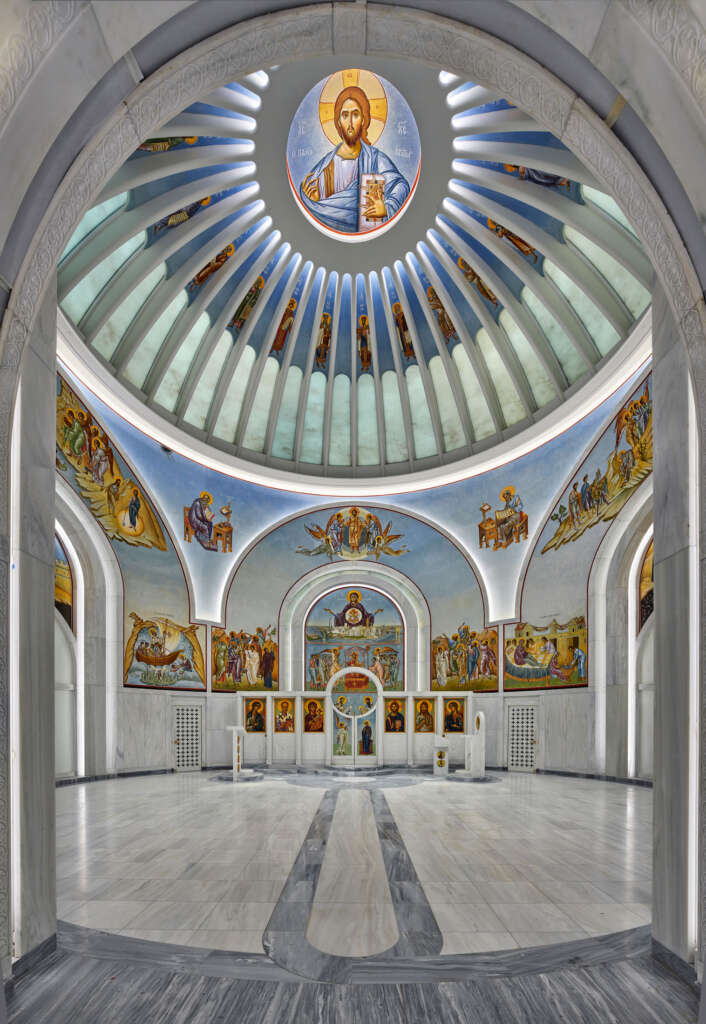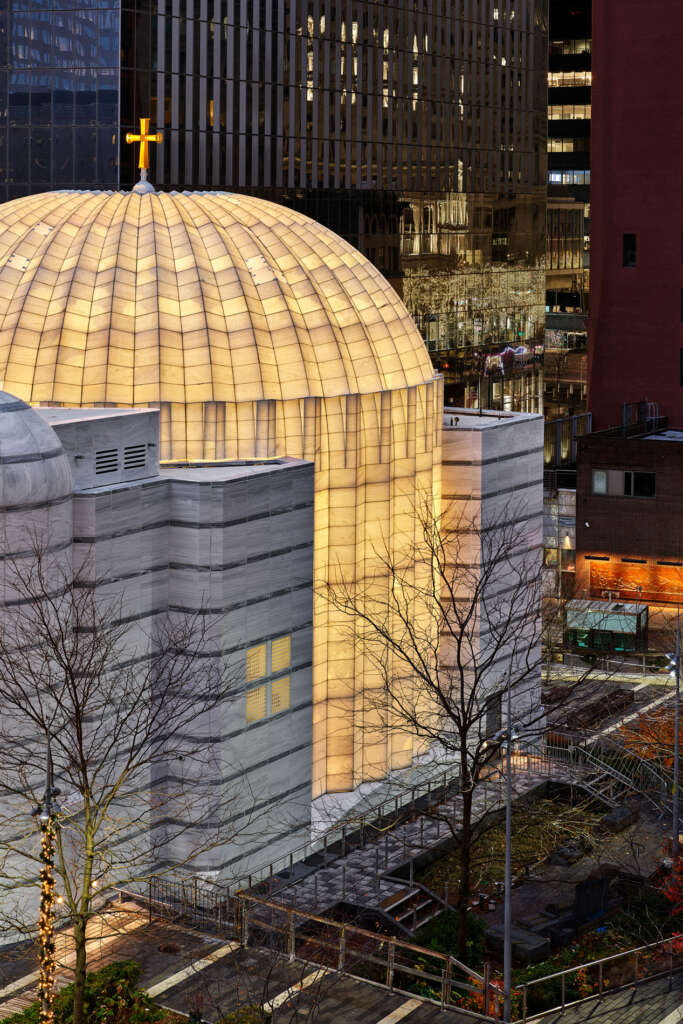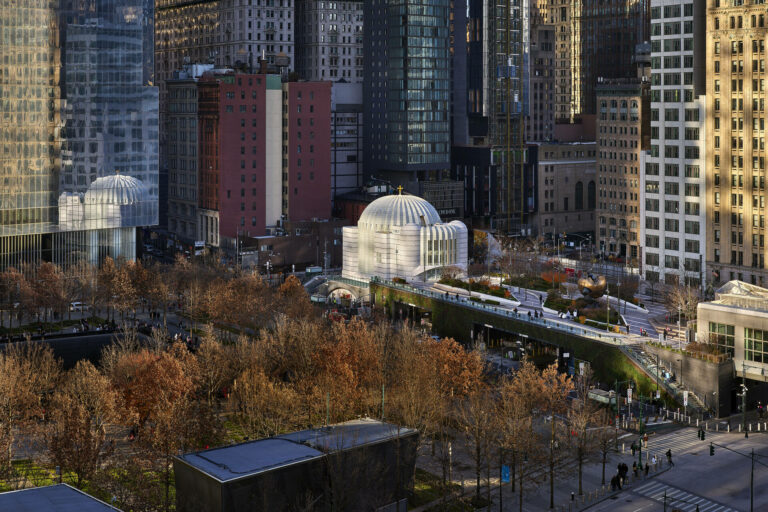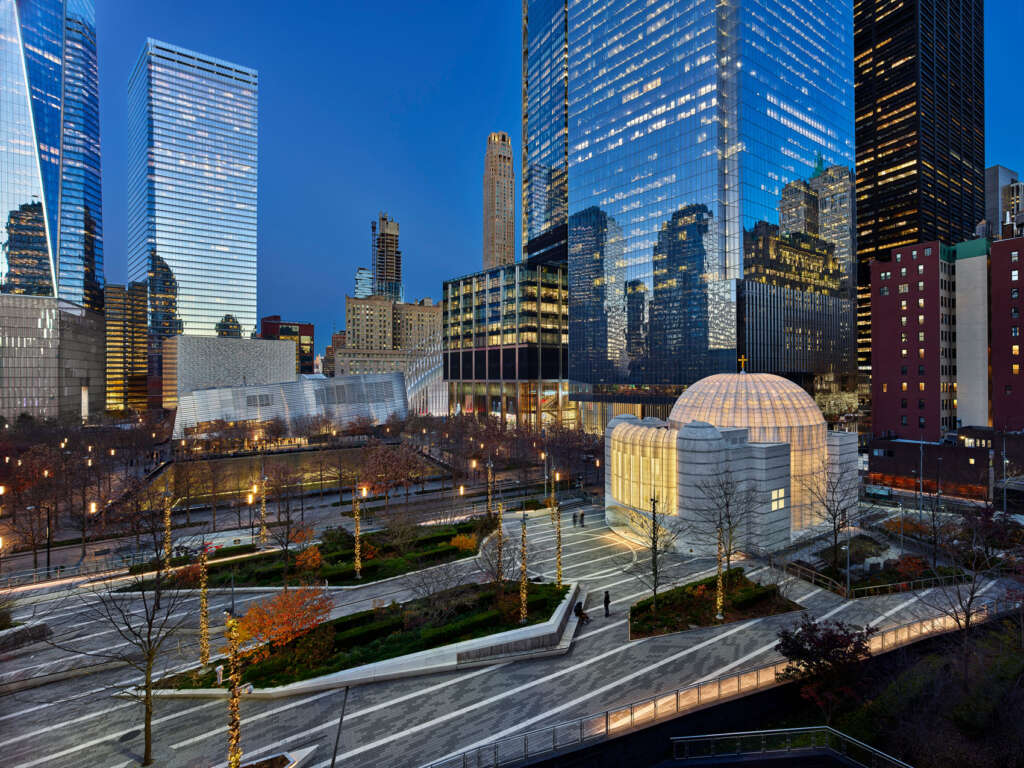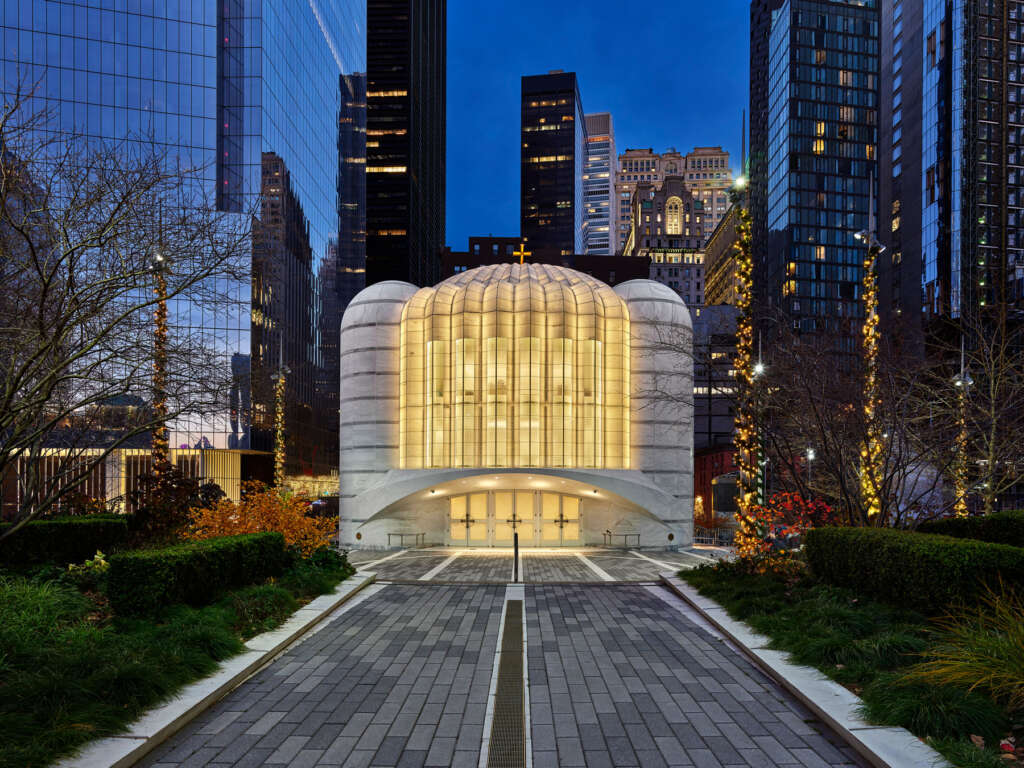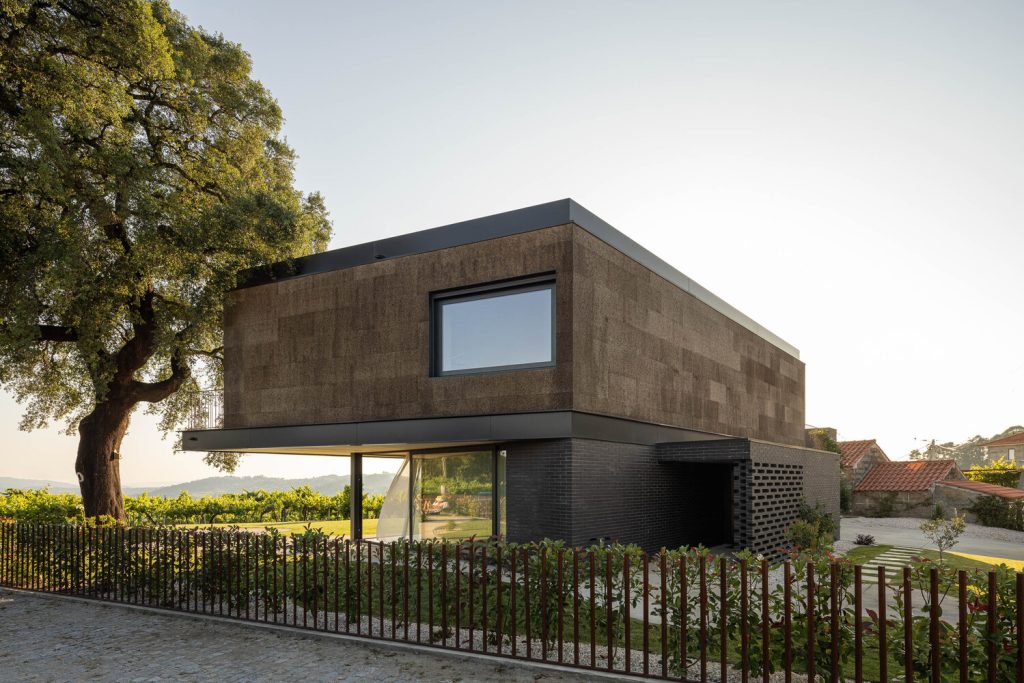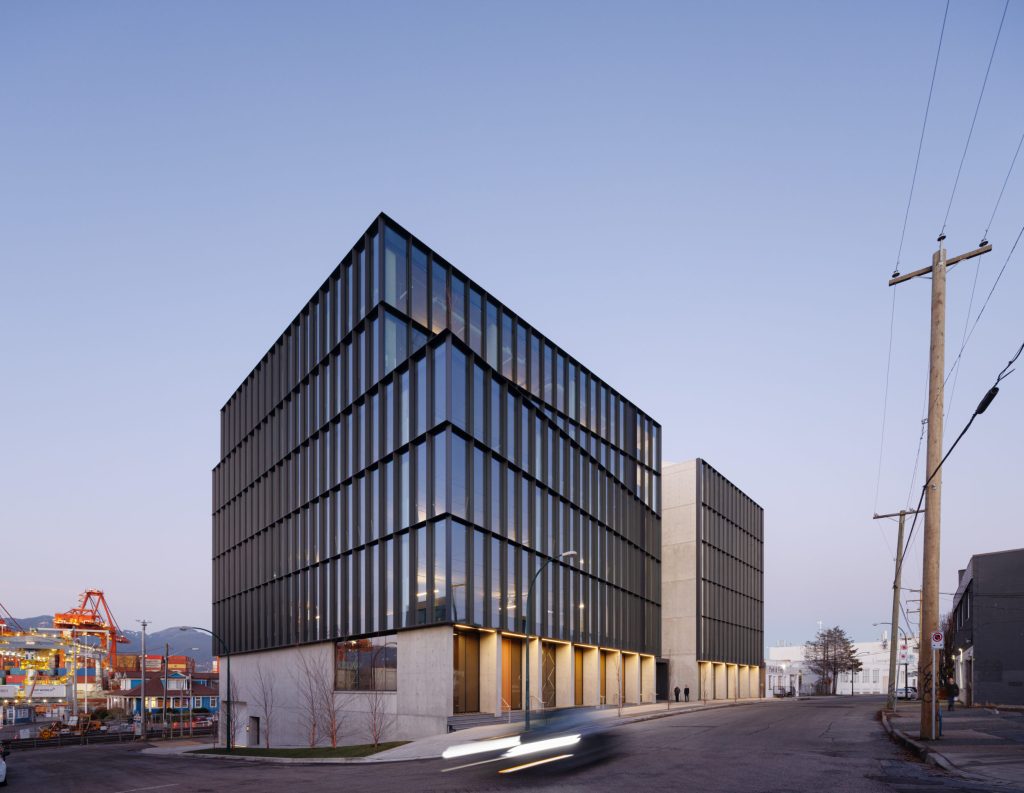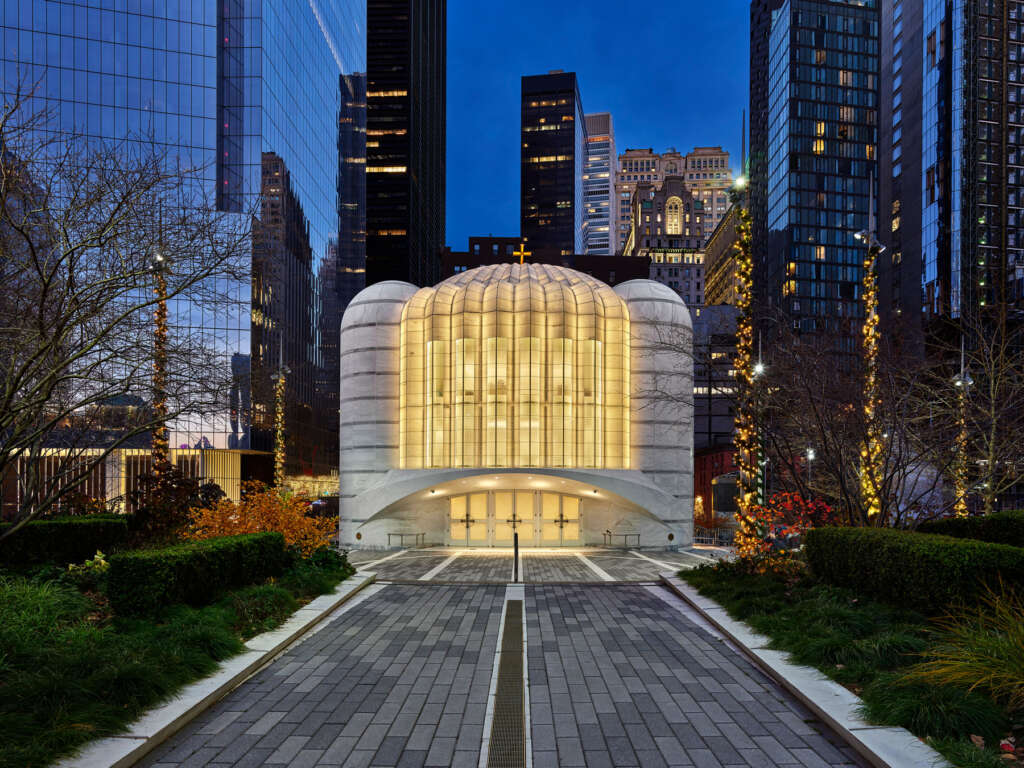
Santiago Calatrava Rebuilds 9/11 Struck St. Nicholas Greek Orthodox Church
On December 6, 2022, architect Santiago Calatrava, alongside the Port Authority of New York and New Jersey, as well as representatives of the Greek Orthodox Church, celebrated the historic reopening of the new St. Nicholas Greek Orthodox Church at the World Trade Center in New York.
Greek immigrants founded the congregation of St. Nicholas Greek Orthodox Church in 1916. In 1919, five families purchased a new location for the church, a three-story tavern that was originally built in the 1832s as a private home. The structure was converted into a church and given a fourth story, holding worship services by 1922. The building was completely destroyed when the South Tower of the original World Trade Center collapsed after being struck by United Airlines Flight 175. Very little of the church’s contents were recovered. Among the most valuable physical possessions lost were some relics of St Nicholas, St Catherine, and St Sava, which had been donated to the church by Nicholas II, the last tsar of Russia, they were removed from their safe on holy days for veneration. Archbishop Demetrios expressed that having the saints’ relics intermingled with the remains of the attack’s victims served to sanctify the site further. Following extensive negotiations with the Port Authority of New York and New Jersey, the Greek Orthodox Archdiocese of America received permission to build a new St. Nicholas Church at the eastern end of the new Liberty Park above the World Trade Center Vehicle Security Center.
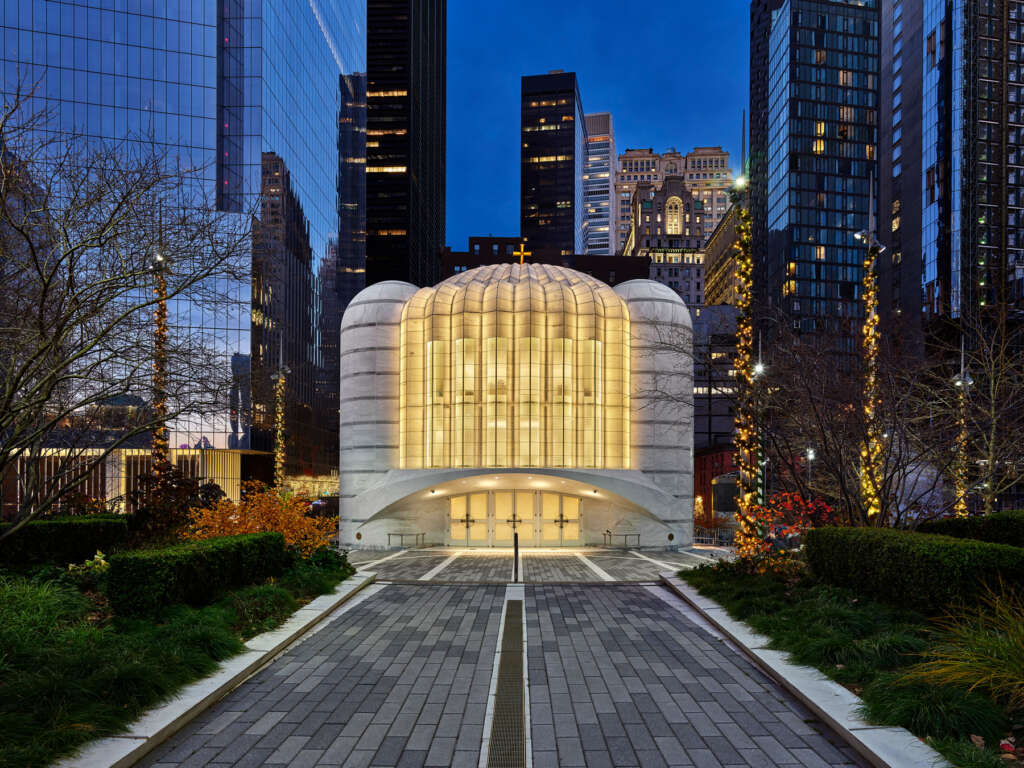
The church is situated approximately twenty five feet above street level, which raises it slightly above the canopy of the World Trade Center Memorial oak trees. Shroud in stone, it is entirely fitting that the church, the only non-secular building on the reconstructed site, occupy this raised position. As such, it will be a spiritual beacon of hope and rebirth for the congregation and the city through the hundreds of thousands of visitors who will pass through the reconstructed World Trade Center site. ‘The design for the church must respect the traditions and liturgy of the Greek Orthodox Church, but at the same time must reflect the fact that we are living in the 21st century.‘ His Eminence, Archbishop Demetrios.
In response to this challenge, Santiago Calatrava set out to provide a building and sequence of spaces that would directly address the traditional Greek liturgy while creating a spatially varied architectural procession. The exterior of the church is comprised of four solid stone clad towers that define a square in plan. A circle inscribed within the square consists of a drum and dome constructed at its exterior of thin stone/glass laminated panels that are illuminated from behind. At night the entire stone curtain-wall system glows in counter-point to the solid mass of the towers. The skin of the drum and dome, formed as a seemingly monolithic material, is divided into forty faceted panels in recognition of the 40 windows in the Hagia Sophia dome.
The corner towers are clad in alternating large and small horizontal bands of white and grey marble reminiscent of the Church of the Holy Savior in Chora, Turkey. Additional program spaces and vertical circulation are housed in an extension of the two western towers; the cladding of which uses the same alternating bands of white and grey marble. On the West façade of the church a faceted curtainwall of similar construction to the exterior dome provides illumination to the Bereavement and community spaces located on the upper levels of the church. The traditional sequence of liturgical spaces starts in a large open plaza west of the church and proceeds through the Porticus, Exonarthex, Narthex, and into the Nave of the church, culminating at the Iconostasis and Sanctuary. From the plaza, which replicates the size, and general shape of the Nave of St. Nicholas, entry into the church is through a low arch spanning between the round stair towers on the west façade. The arch forms a sheltered porticus approximately eight feet deep in front of the entry doors that open onto the Exonarthex.


Historically, the Exonarthex was a space used by the catechumen, or non-baptized, who were not permitted into the sacred space of the Nave. In St. Nicholas, due to the constricted scale of the church, the Exonarthex is merged with the Narthex to form a single contiguous space that circumscribes the Nave. It houses a shop that controls entry and provides assistance and information to visitors, and connection to the upper levels of the church. Circular candle rooms located laterally to the Narthex house non-denominational spaces where parishioners and visitors alike may meditate or pray in remembrance of loved ones. “I hope this structure will serve its purpose as a sanctuary for worship, but also as a place for reflection on what the city has endured and how it is moving forward” commented architect Santiago Calatrava on the day of the World Trade Center Church’s opening.
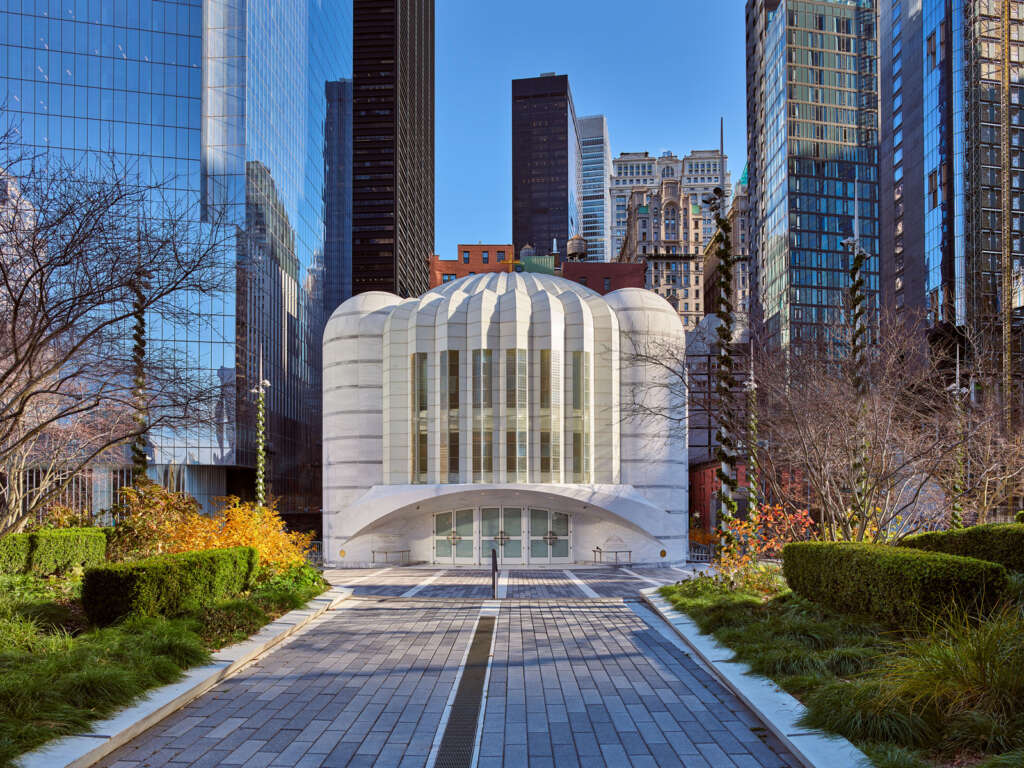
- Architect: Santiago Calatrava
- Location: New York City, USA
- Year: 2022
- Photographs: Alan Karchmer
